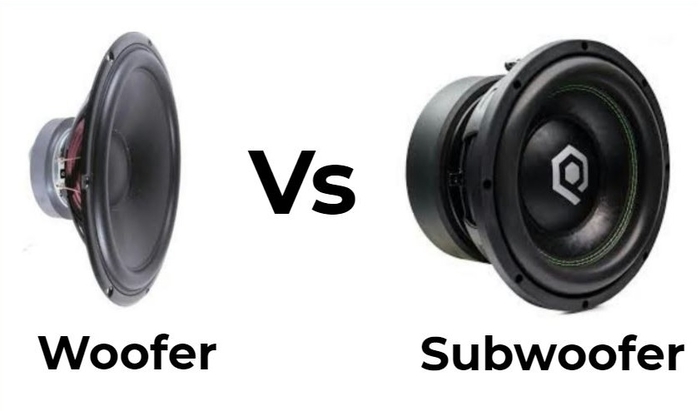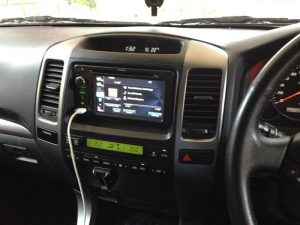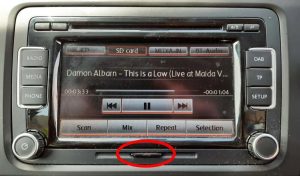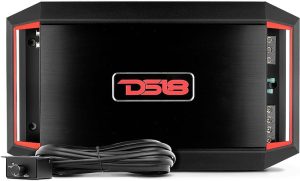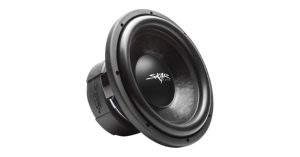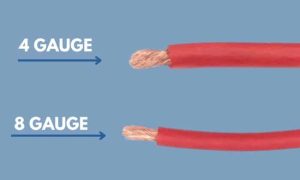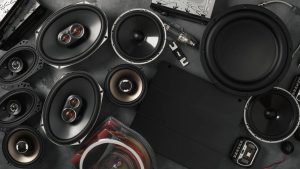When you dive into the world of audio systems, you quickly encounter terms like subwoofers, speakers, woofers, and tweeters. For beginners, these terms can blur together, creating confusion. Are subwoofers just fancy speakers? Do you need both for a killer car or home audio setup? This guide breaks down the differences between subwoofers and speakers, helping you understand their unique roles, how they work together, and why each matters for an immersive sound experience. By the end, you’ll know exactly what to look for to elevate your audio game, whether you’re building a home theater or upgrading your car stereo.
Contents
What Are Speakers?
Speakers form the backbone of any audio system. They convert electrical signals into sound waves, letting you hear music, dialogue, or sound effects. Think of speakers as all-purpose players in the audio world. They handle a wide range of frequencies, from low bass notes to high-pitched treble. Most speakers you encounter in home theater systems, car stereos, or even your TV consist of multiple drivers—specialized components designed to tackle specific frequency ranges.
For example, a typical speaker might include:
- Tweeters: These small drivers focus on high frequencies, like the crisp sound of cymbals or a singer’s voice.
- Midrange drivers: These cover middle frequencies, such as vocals or guitar riffs.
- Woofers: These handle lower frequencies, like the thump of a bass guitar or the rumble of a movie explosion.
Speakers aim to deliver a balanced sound across the entire audio spectrum, typically from 20 Hz to 20,000 Hz. This broad range makes them versatile, suitable for everything from casual music listening to detailed podcast playback. However, while speakers can produce bass, they often struggle to deliver the deep, chest-thumping low frequencies that make music and movies feel alive. That’s where subwoofers step in.
What Are Subwoofers?
Subwoofers are specialized speakers designed to reproduce low-frequency sounds, often called bass or sub-bass. These frequencies, typically ranging from 20 Hz to 200 Hz, create the deep, rumbling effects you feel in your chest during a movie explosion or the pulsating beat of a hip-hop track. Unlike regular speakers, subwoofers focus solely on these low-end frequencies, making them the powerhouse of bass in any audio setup.
A subwoofer usually consists of one or more large drivers—called woofers—housed in a sturdy enclosure. The enclosure, often made of wood or high-quality plastic, enhances the bass output by controlling airflow. Subwoofers come in two main types:
- Active subwoofers: These have a built-in amplifier, making them easier to integrate into a system since they don’t require an external amp.
- Passive subwoofers: These rely on an external amplifier, offering more customization but requiring extra setup.
Because subwoofers target low frequencies, they need to move a lot of air. This explains why their drivers are larger—often 8 to 18 inches in diameter—and why the enclosures are bulkier than those of regular speakers. The result? A rich, immersive bass experience that standard speakers simply can’t match.
Key Differences Between Subwoofers and Speakers
To make the distinction crystal clear, let’s compare subwoofers and speakers across several key factors. Understanding these differences helps you decide what your audio setup needs.
1. Frequency Range
The biggest difference lies in the frequencies each device handles. Speakers cover a broad spectrum, from 20 Hz to 20,000 Hz, reproducing everything from deep bass to sparkling treble. They aim for balance, ensuring vocals, instruments, and sound effects all come through clearly. Subwoofers, on the other hand, zero in on the low end—20 Hz to 200 Hz. This narrow focus allows subwoofers to deliver powerful, precise bass that adds depth to music and movies.
For instance, when you listen to a rock song, the speaker handles the vocals and guitar riffs, while the subwoofer emphasizes the kick drum and bassline, making the music feel fuller.
2. Design and Construction
Speakers and subwoofers differ significantly in their build. Most speakers house multiple drivers (tweeters, midrange, and woofers) in a single enclosure to cover the full audio spectrum. Subwoofers typically use one or two large woofers in a dedicated enclosure optimized for bass. These enclosures often feature ports or vents to enhance low-frequency output, a design choice less common in standard speakers.
Subwoofers also tend to be larger and heavier due to their bigger drivers and robust enclosures. A high-quality subwoofer, like those from brands such as SVS or Klipsch, might weigh 50 pounds or more, while a bookshelf speaker could be as light as 10 pounds.
3. Purpose and Functionality
Speakers aim to provide a complete audio experience. They work independently or in pairs to deliver stereo sound, making them ideal for casual listening or dialogue-heavy content like podcasts. Subwoofers, however, play a supporting role. They enhance the bass, complementing speakers by filling in the low frequencies that standard drivers struggle to reproduce.
You can use speakers without a subwoofer, but a subwoofer rarely works alone. Playing audio through only a subwoofer would sound muffled, like listening underwater, because it misses the mid and high frequencies. Together, speakers and subwoofers create a balanced, immersive soundstage.
4. Power Requirements
Subwoofers demand more power than speakers because low frequencies require significant energy to produce. Active subwoofers, with their built-in amplifiers, often draw hundreds of watts to drive their large woofers. Passive subwoofers need a powerful external amplifier to achieve the same effect. Speakers, especially those handling mid and high frequencies, require less power, making them easier to integrate into a basic audio setup.
For example, a car audio system might pair 50-watt speakers with a 500-watt subwoofer to ensure the bass punches through road noise. This power disparity highlights why subwoofers are often a separate component in high-end systems.
5. Placement and Setup
Where you place speakers and subwoofers affects their performance. Speakers need careful positioning to create a balanced soundstage—think of placing bookshelf speakers at ear level or angling floorstanders for optimal stereo imaging. Subwoofers offer more flexibility. Because low frequencies are less directional, you can place a subwoofer in a corner or under a seat in a car without losing impact.
However, subwoofer placement still matters. In a home theater, positioning the subwoofer near a wall can boost bass, but too close might create boomy, uneven sound. In a car, subwoofers often go in the trunk or under a seat, where they can maximize bass without sacrificing passenger space.
6. Cost and Accessibility
Speakers generally cost less than subwoofers because they require less power and simpler construction. A decent pair of bookshelf speakers, like the Edifier R1280T, might set you back $100, while a quality subwoofer, such as the Dayton Audio SUB-1200, often starts at $150 or more. Subwoofers also involve additional costs for amplifiers or enclosures, especially for passive models.
That said, budget-friendly options exist for both. Logitech and Edifier offer affordable speaker systems with small subwoofers for casual use, while brands like Polk Audio provide entry-level subwoofers for home theater enthusiasts.
Why You Need Both in Your Audio Setup
Now that you know the differences, you might wonder: do you need both speakers and a subwoofer? The answer depends on your audio goals, but combining them often delivers the best experience. Here’s why:
1. Enhanced Sound Quality
Subwoofers take the strain off speakers by handling low frequencies, allowing speakers to focus on mid and high ranges. This division of labor results in clearer vocals, sharper treble, and deeper bass. For example, in a movie, the subwoofer makes explosions feel visceral, while the speakers ensure dialogue remains crisp.
2. Immersive Experience
Whether you’re watching an action blockbuster or listening to electronic music, a subwoofer adds a physical dimension to sound. You don’t just hear the bass—you feel it. This tactile quality makes audio more engaging, whether you’re in a car or a living room.
3. Balanced Audio
Without a subwoofer, speakers might struggle to produce deep bass, leading to distorted or muddy sound. A subwoofer ensures the low end stays clean and powerful, creating a balanced soundstage where no frequency overshadows another.
4. Versatility Across Genres
Different music genres and media rely on bass to varying degrees. Hip-hop, EDM, and action movies demand strong low-end presence, which subwoofers deliver. Even classical music benefits from a subwoofer, as it captures the rumble of a pipe stort organ or the resonance of a double bass. Speakers alone might miss these nuances.
Choosing the Right Subwoofer and Speakers
Selecting the right components for your audio system requires balancing your budget, space, and listening preferences. Here are some tips to guide your decision:
For Speakers
- Consider your space: Bookshelf speakers work well for small rooms, while floorstanders suit larger spaces.
- Check power handling: Ensure your amplifier or receiver can drive the speakers without distortion.
- Look for frequency response: A wider range (e.g., 40 Hz to 20,000 Hz) offers more versatility, though you’ll still need a subwoofer for deep bass.
- Test sound quality: Brands like Klipsch, Bose, and NVX offer models with distinct sound signatures—try them out if possible.
For Subwoofers
- Size matters: Larger subwoofers (12–15 inches) produce deeper bass but need more space. Smaller ones (8–10 inches) fit tighter spaces, like car trunks.
- Active vs. passive: Active subwoofers are plug-and-play, ideal for beginners. Passive models offer customization but require a separate amp.
- Power output: Higher wattage (e.g., 300–500 watts) ensures strong bass, especially for large rooms or bass-heavy genres.
- Enclosure type: Sealed enclosures deliver tight, accurate bass, while ported ones emphasize loud, booming bass.
Matching Components
To get the best performance, pair your subwoofer and speakers thoughtfully. Check the crossover settings—typically a dial on the subwoofer—that determines where the subwoofer’s bass hands off to the speakers’ midrange. Set the crossover about 10 Hz above your speakers’ lowest frequency (e.g., 80 Hz if your speakers reach 70 Hz). This ensures a seamless blend between the two.
Also, consider your amplifier’s power output. A weak amp might struggle to drive both speakers and a passive subwoofer, leading to lackluster sound. Brands like Rockford Fosgate and Polk Audio offer systems designed to work together, simplifying the process.
Common Myths About Subwoofers and Speakers
Audio enthusiasts often encounter misconceptions that can cloud their decisions. Let’s debunk a few:
- Myth 1: Speakers with woofers don’t need subwoofers. While woofers in speakers handle low frequencies, they rarely match the depth and power of a dedicated subwoofer. Even high-end tower speakers benefit from a sub.
- Myth 2: Subwoofers are only for bass-heavy music. Subwoofers enhance all genres, from classical to jazz, by adding depth to low-end instruments and effects.
- Myth 3: More subwoofers always mean better sound. One well-placed, high-quality subwoofer often outperforms multiple cheap ones. Dual subwoofers can help in large rooms but require careful setup.
- Myth 4: Speakers alone can deliver a full audio experience. Without a subwoofer, you miss the visceral impact of low frequencies, leaving music and movies feeling flat.
Practical Tips for Setting Up Your Audio System
To maximize your subwoofer and speaker performance, follow these practical steps:
- Position speakers for stereo imaging: Place speakers at ear level, forming an equilateral triangle with your listening position. Angle them slightly inward for the best soundstage.
- Experiment with subwoofer placement: Try corners or along walls for boosted bass, but test multiple spots to avoid boomy sound. In cars, ensure the subwoofer doesn’t rattle loose panels.
- Fine-tune the crossover: Adjust the subwoofer’s low-pass filter to blend smoothly with your speakers. Use a test track with varied frequencies to find the sweet spot.
- Use room correction tools: Many modern receivers, like those with Audyssey or AccuEQ, automatically calibrate speakers and subwoofers for your room’s acoustics.
- Check wiring and connections: Loose cables or mismatched impedance (e.g., 4 ohm vs. 8 ohm) can degrade sound quality. Double-check your setup.
When to Upgrade Your Audio System
If your current setup lacks punch or clarity, it might be time to upgrade. Signs you need a subwoofer include:
- Music feels flat or lacks depth.
- Movie sound effects sound weak or hollow.
- Your speakers distort when you crank the volume.
If your speakers sound muddy or struggle with vocals, consider upgrading to a higher-quality pair. Brands like NVX, Kanto, and Fluance offer excellent options across budgets, while subwoofers from SVS, Klipsch, or Dayton Audio can transform your bass experience.
Final Thoughts
Subwoofers and speakers each play vital roles in delivering high-quality audio. Speakers provide the foundation, handling mid and high frequencies to ensure clarity and balance. Subwoofers add the magic, bringing deep, powerful bass that makes music and movies come alive. By understanding their differences—frequency range, design, power needs, and purpose—you can build a system that suits your needs, whether you’re a casual listener or a dedicated audiophile.
For the best results, combine speakers and a subwoofer, fine-tune their settings, and place them thoughtfully. Whether you’re blasting tunes in your car or enjoying a movie night at home, this duo ensures every note and effect hits just right. Ready to upgrade your audio? Start exploring trusted brands and test different setups to find your perfect sound.
